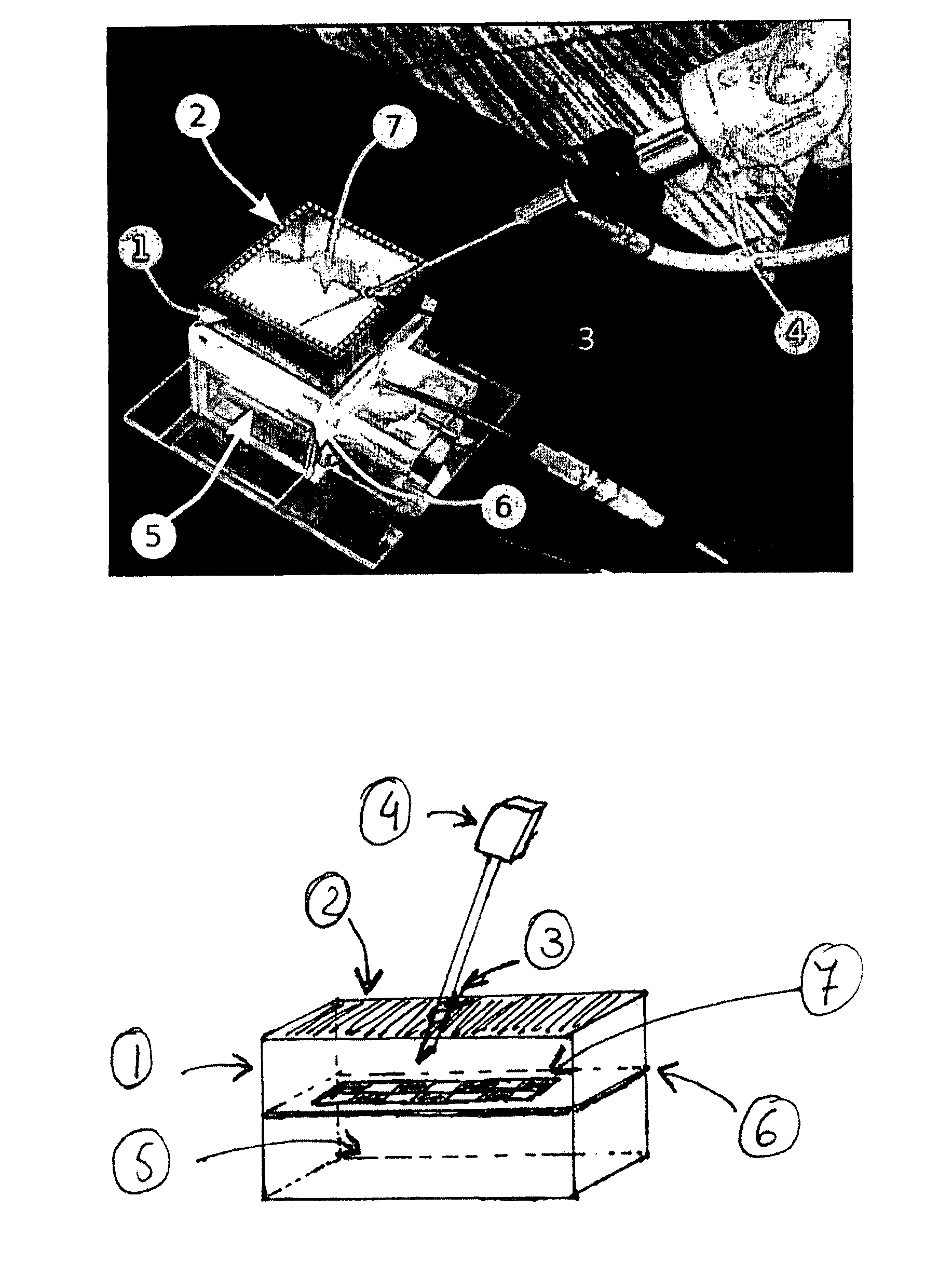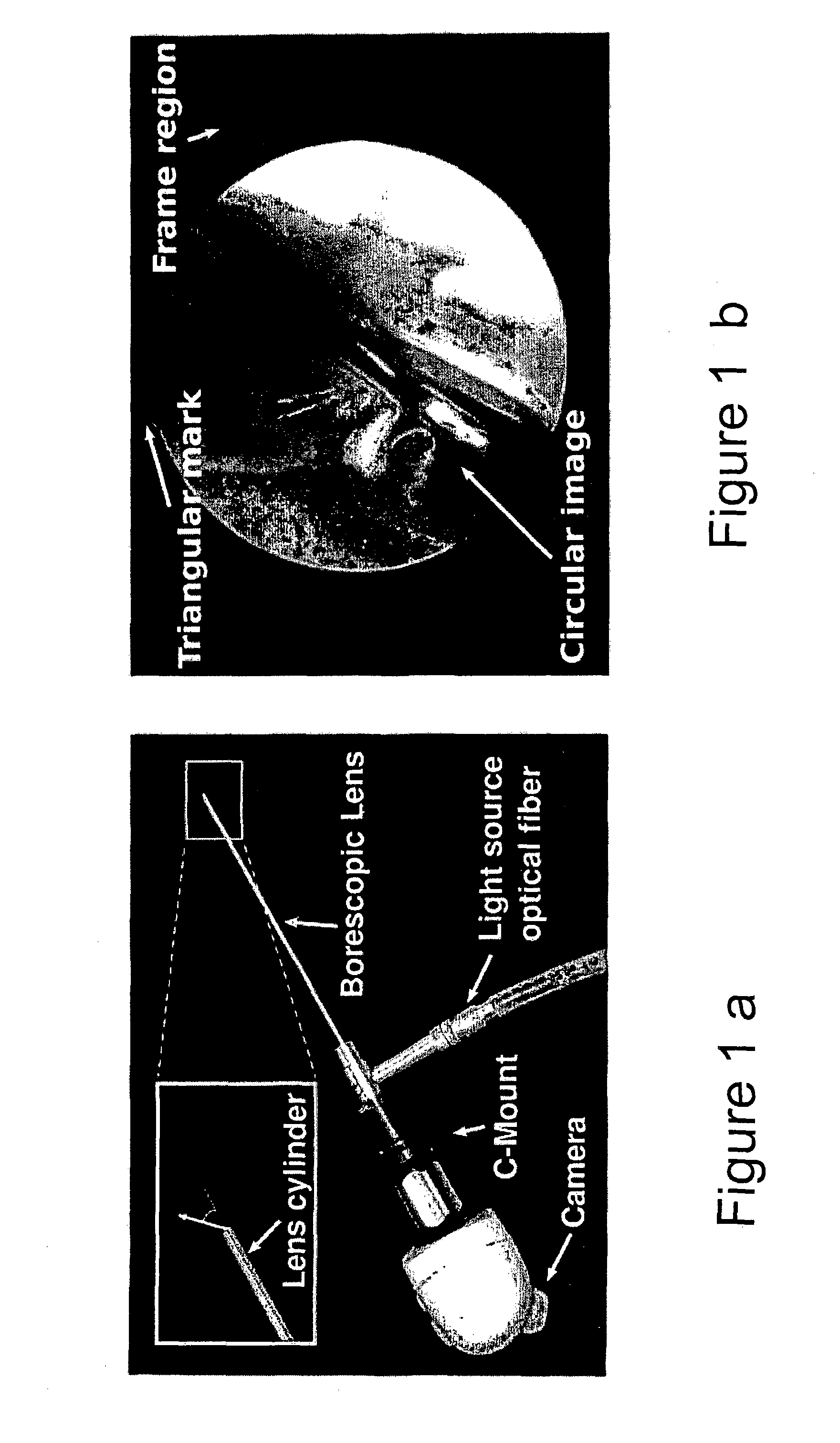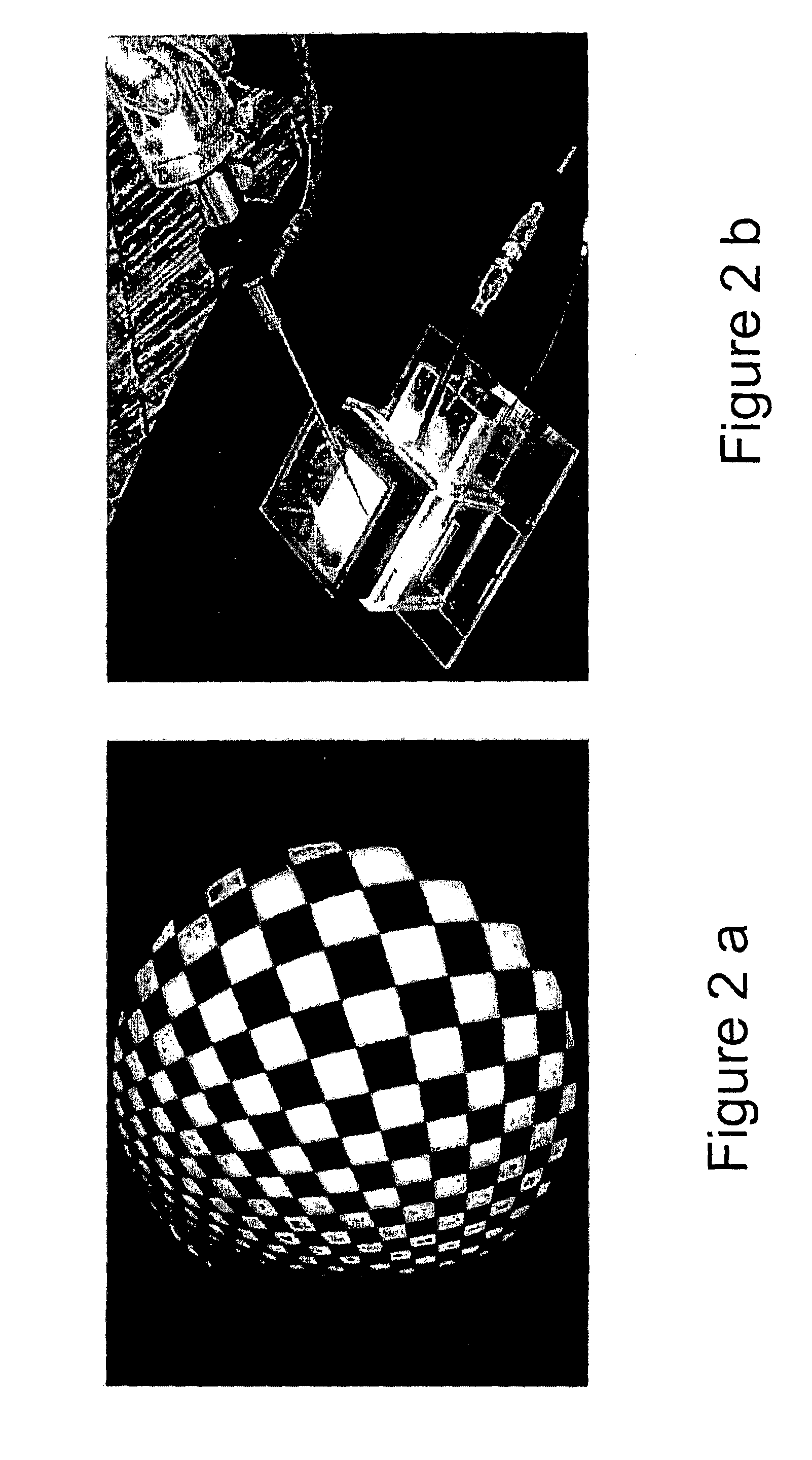Method and apparatus for automatic camera calibration using one or more images of a checkerboard pattern
a technology of automatic camera calibration and checkerboard pattern, which is applied in the field of automatic camera calibration using one or more images of checkerboard pattern, can solve the problems of comprehensive degrading the accuracy of real image measurements, introducing aberrations in the resulting images, and affecting the quality of the imag
- Summary
- Abstract
- Description
- Claims
- Application Information
AI Technical Summary
Benefits of technology
Problems solved by technology
Method used
Image
Examples
Embodiment Construction
[0031]We propose a complete solution for the calibration, online updating of the projection parameters in case of lens rotation, and radial distortion correction in real-time. The solution comprises the modules and blocks shown in the scheme in FIG. 3 and the apparatus of FIG. 14, being that the operator starts by acquiring a single image of a checkerboard pattern using the setup in FIG. 2.
[0032]The system herein presented was originally meant for medical endoscopy that typically employs a boroscopic lens probe mounted on a standard CCD camera. However, our solution is extendable to other application domains using cameras with significant radial distortion that might benefit from accurate geometric calibration and real-time image correction. Examples of these domains include surveillance, industrial inspection, automotive, robot navigation, etc, that often rely in images / video acquired by cameras equipped fish-eye lenses, wide angular lenses, mini lenses, or low quality optics.
[0033...
PUM
 Login to View More
Login to View More Abstract
Description
Claims
Application Information
 Login to View More
Login to View More - R&D
- Intellectual Property
- Life Sciences
- Materials
- Tech Scout
- Unparalleled Data Quality
- Higher Quality Content
- 60% Fewer Hallucinations
Browse by: Latest US Patents, China's latest patents, Technical Efficacy Thesaurus, Application Domain, Technology Topic, Popular Technical Reports.
© 2025 PatSnap. All rights reserved.Legal|Privacy policy|Modern Slavery Act Transparency Statement|Sitemap|About US| Contact US: help@patsnap.com



